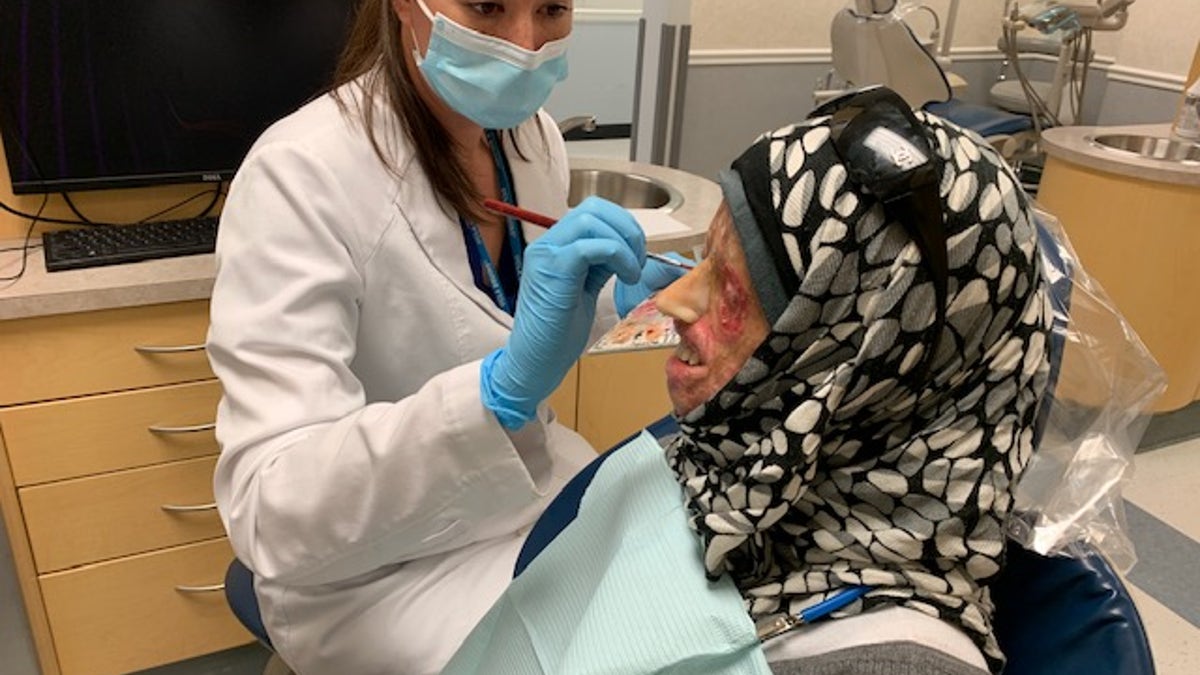
Syrian burn victim Hamama offers a rare smile as she is fitted for a new prosthetic nose by UCLA's Dr. Christine Fortmann in Los Angeles, CA. (Fox News/Hollie McKay)
She is nothing short of a medical miracle.
It was sometime in 2016, amid the scourge of the Syrian war. One moment, then-15-year-old Hamama was playing in the mountains with her animals in her poor family’s remote farm in the Homs countryside. In the next moment all of her family, much of her memory, and almost her entire face was gone.
But thanks to the U.S advocacy group Burnt Children’s Relief Foundation (BCRF) and American medical professionals, with support from the State Department to navigate the murky and complex terrain of visa red tape, Syrian children like Hamama have a second chance to repair the pieces of their broken bodies and lives.
“Today is a new nose,” said the softly spoken Hamama, who appears far tinier than her newly turned 18 years.
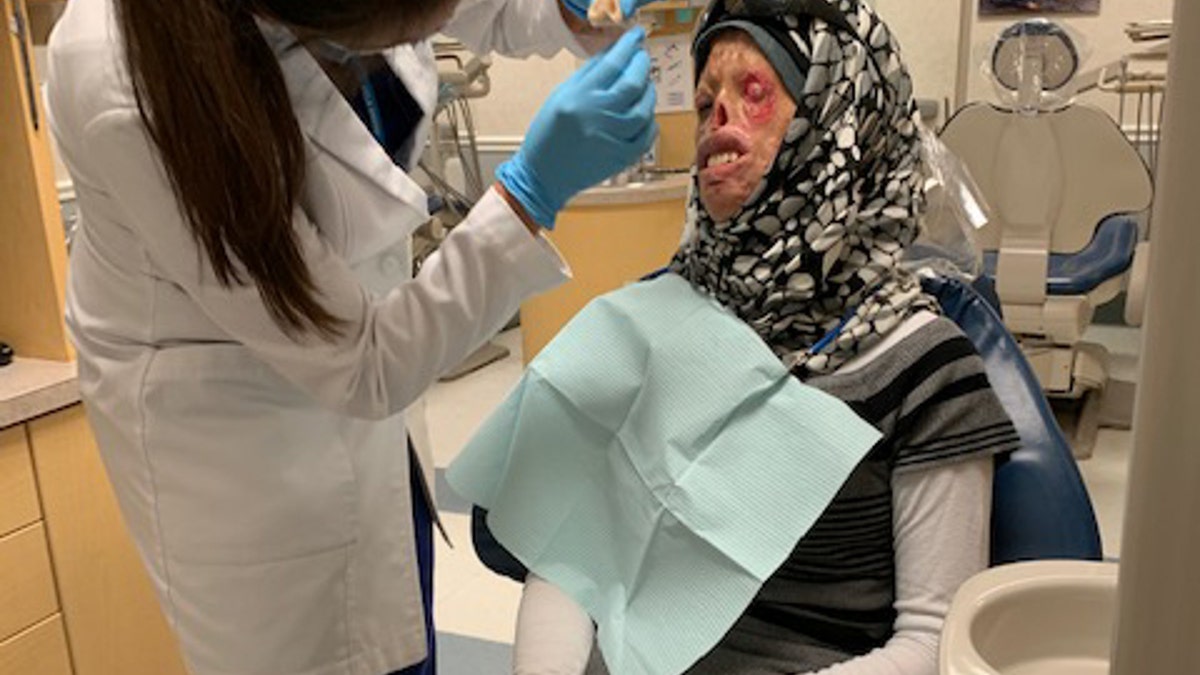
Hamama doesn’t know who she will return to when her treatment comes to an end.
She has been blinded in one eye, her skin burned raw and her hair all gone, and each breath is not without a struggle. A glance at her own reflection in the mirror is still haunted by a momentary wince, only there are no tear ducts left for weeping.
THE AFTERMATH OF SYRIA’S CHEMICAL WEAPONS ATTACKS
Meanwhile, the UCLA prosthodontist, Dr. Christine Fortmann, delicately paints a replica of Hamama’s skin tone onto the carefully sculpted silicone. It’s her fourth prosthetic nose appointment – the next time she will likely get to go home with her coveted facial feature. And while Hamama will have to remove it every night and while showering, but the thought of having a nose-by-appearance is enough to bring a rare smile to the young woman’s tragically seared face.
“This has been a challenge because normally we draw to match a patient’s real nose, but in this case we had nothing. Not even a photograph. But helping in this way is the whole reason I went into this profession,” Fortmann said. “It’s not just a science, it is also art.”
Horrific burns have long become synonymous with the Syrian Civil War, now stretching into its eighth year, with children all too often the victims of the regime’s arbitrary and deadly “barrel bombs” – bombs comprised of a large container stuffed with gasoline, nails, and chunks of steel and tossed from a helicopter.
Thousands of Syrian children have lost their lives and thousands more have been severely wounded. For those charred in the ongoing fighting, especially in opposition-held areas, there is little help or recourse. But since 2016, BCRF has treated twenty Syrian children in the United States, with the aid of Shriners Hospital in Galveston, Texas and Pasadena, California, along with other partners such as UCLA for nose and eyes issues.
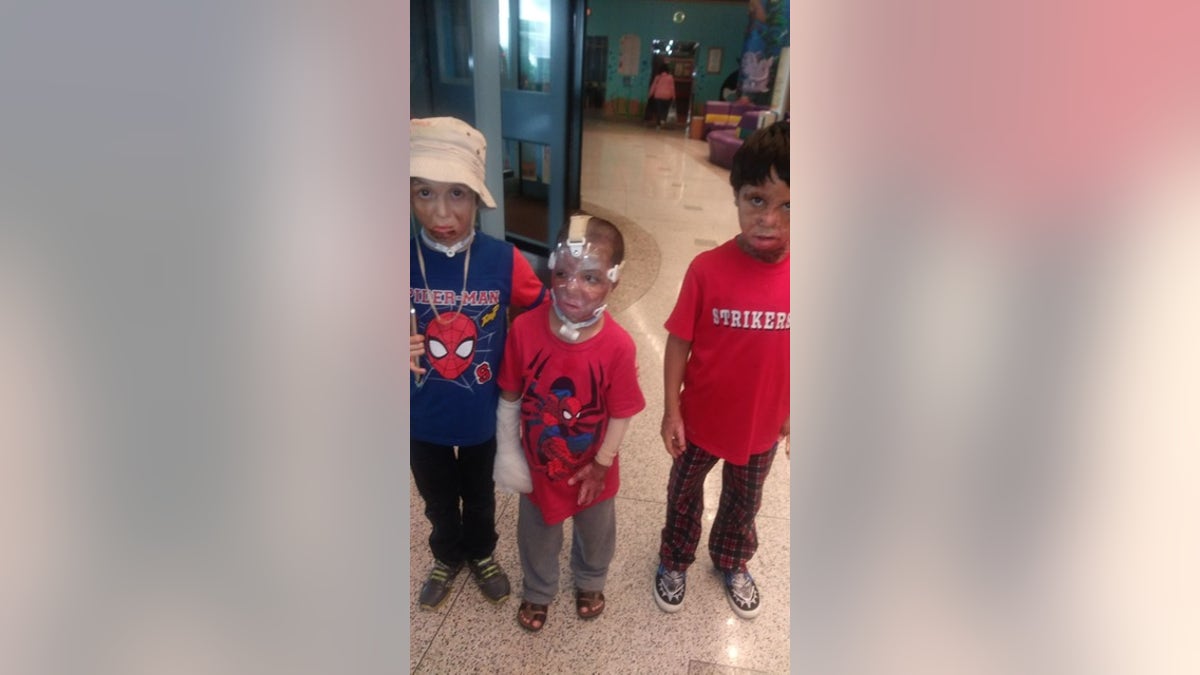
Syrian children are given life-saving treatment in the U.S. thanks to BCRF and Shriners Hospital (BCRF)
Only BCRF is able to accommodate just the most severe of the severe cases, with a further 25 on the waiting list. Yet according to Susan Baaj, Chairwoman of BCRF which is manned entirely by volunteers as it raises money to bring the most desperate of all cases to the U.S. for life-saving medical treatment, not a day goes by where they aren’t approached by someone presenting a new case and begging for help.
“It’s important we do what we can to give them a second chance at life, these are innocent children and each has one story worse than the next,” she said.
Despite the agonizing depths of their injuries, Hamama counts her blessings as one of the lucky ones.

Ayesha, 8, doing her homework before surgery (BCRF)
While undergoing treatment, she shares a small apartment in Southern California’s Orange County with fellow Syrian burn victim and Idlib native Ayesha, just 8 years old, who breaks hearts in the ward when she dons her lab coat and purports to help her roommate on the morning before surgery.
The vivacious Ayesha is determined to grow up to be a doctor specializes in treating burn patients like herself.
“Everyone said Ayesha had no chance of living,” Baaj noted. “But she survived it.”
Other cases have been even more perplexing for doctors. Some appear to have more than 80 percent of their bodies marred by odd chemical-like burns, which have seeped into internal organs and caused severe lung and breathing issues, Baaj observed.
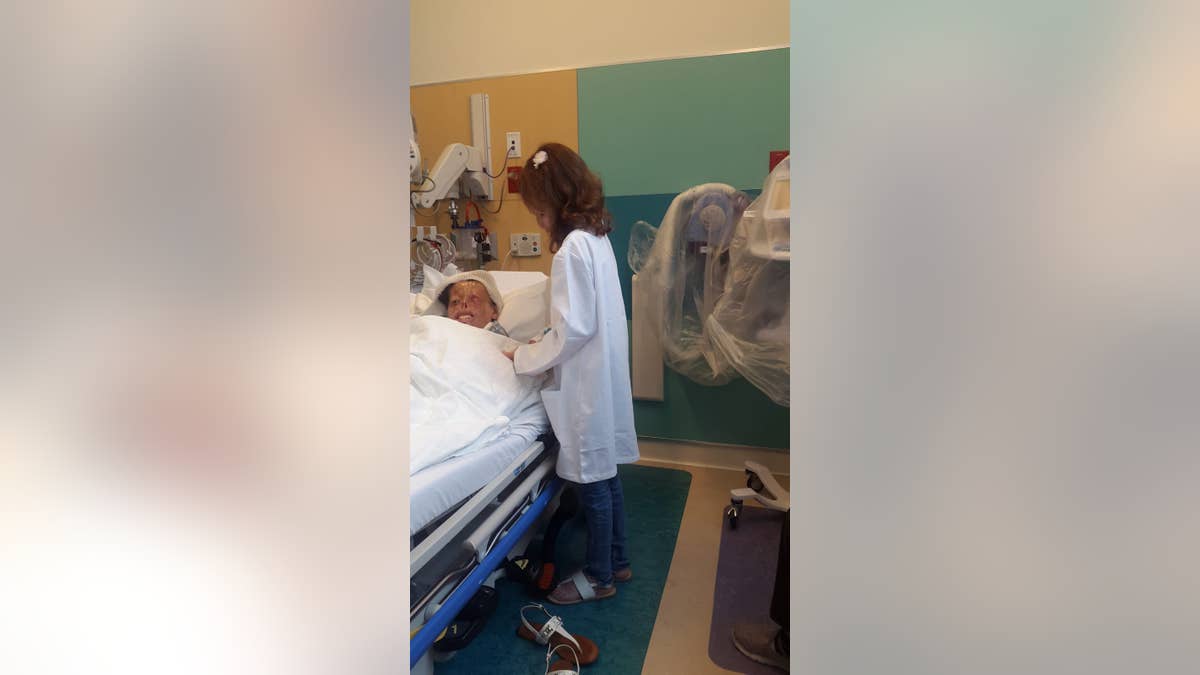
Ayesha "treating" her roommate Hamama before surgery (BCRF)
While Hamama was the eldest patient at age 17 when she arrived stateside last year – orphaned and all alone – the patients are permitted to travel with one female family member and caregiver. The youngest case to arrive was a baby girl Kawthar in 2016, at just 8 months. After a bomb ripped through her family home, the infant’s entire little frame had been drastically scorched from head-to-toe, and she was unable to close her eyes. Sadly, doctors determined that she was simply too young to endure such a complex series of surgeries and she returned to Turkey.
“We try to keep kids as close to home as possible,” explained Tanya Sorkin, Chief Program Officer at the Children’s Burn Foundation which supports BCRF in fostering medical connections. “But in Syria, this simply isn’t possible.”
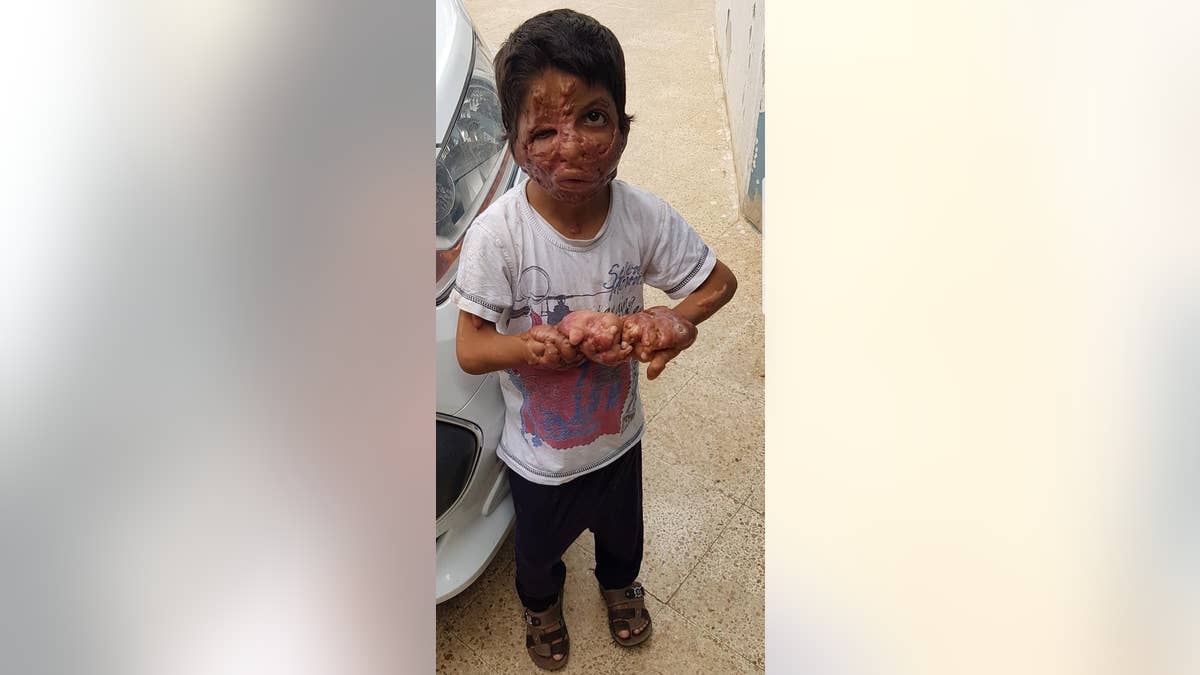
Syrian children are given life-saving treatment in the U.S. thanks to BCRF and Shriners Hospital
UN QUIETLY PLANS TO MOVE ALL HUMANITARIAN AID OPERATIONS FOR SYRIA TO DAMASCUS
Unlike other refugee resettlement programs, the foundation’s policy is not to grant permanent residency to the children. Instead, those in the direst straits are able to stay only for the necessary treatment period – averaging six months to one year – before being repatriated with family members abroad.

Kawthar, who was just an infant when injured in a bombing, received some treatment but will have to wait until she is older for more complex surgeries (BCRF)
The foundation also integrates the visiting children with classes in both English and Arabic, teaching them to read and write in an array of subjects and the “American Way of Life.”
Now without any known family still alive and with a long road to recovery, Hamama doesn’t know who she will return to when her treatment comes to an end – but she is determined not to let her second chance at life languish.
“I just want to say thank you,” she whispers.

Syrian children are given life-saving treatment in the U.S. thanks to BCRF and Shriners Hospital (BCRF)
After the appointment is done and dusted, Hamama changes her messenger app name. Her new title? "I will be happy."



















